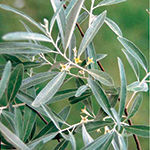
Invasive – Russian Olive
(Elaegnus angustifolia)
1. Silver Buffaloberry
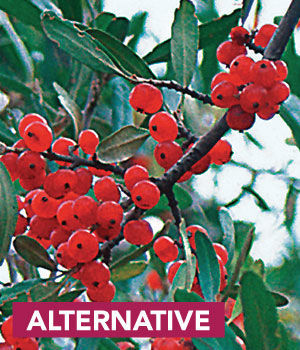
Name: Shepherdia argentea
USDA Hardiness Zones: 3 to 6
Size: 8 to 15 feet tall and 6 to 10 feet wide
Conditions: Full sun to partial shade; any well-drained soil
A cousin of Russian olive, silver buffaloberry is a cold-hardy ornamental with silvery leaves and showy red berries (on female plants). Grow it as a large shrub, or prune the lower limbs to form a small multistemmed tree. Silver buffaloberry also makes an excellent habitat plant. Songbirds relish its tart fruit and nest in its thorny branches, where they’re safe from house cats and other predators.
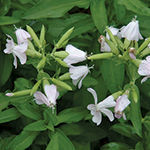
Invasive – Soapwort
(Saponaria officinalis)
2. ‘Max Frei’ Soapwort
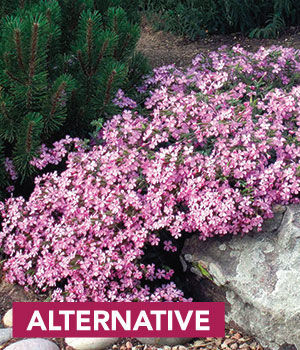
Name: Saponaria lempergii ‘Max Frei’
Zones: 5 to 8
Size: 1 foot tall and 18 inches wide
Conditions: Full sun to partial shade; prefers moderately moist, average loam
A woefully underutilized perennial, ‘Max Frei’ soapwort is a standout in late summer. For well over a month, quarter-size pink flowers completely engulf the plant. This cascading low grower makes a well-behaved ground cover, demands no coddling, and goes untouched by pests and grazing deer.
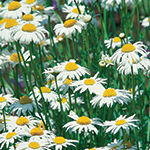
Invasive – Ox-Eye Daisy
(Leucanthemum vulgare)
3. ‘Lucky Star’ Coneflower
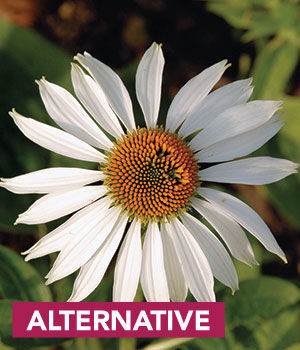
Name: Echinacea purpurea ‘Lucky Star’
Zones: 3 to 9
Size: 36 to 40 inches tall and 18 inches wide
Conditions: Full sun; prefers moderately moist, average loam
A new seed-grown, white-flowering cultivar, ‘Lucky Star’ coneflower is a sturdy, vigorous grower that blooms from midsummer to fall. Its nectar-rich flowers attract butterflies and bees in droves, making it a must for habitat gardens. After the flowers fade, leave them on the plant to attract seed-eating finches and other birds during the fall and winter months.

Invasive – Donkeytail Spurge
(Euphorbia myrsinites)
4. ‘Blue Haze’ Spurge

Name: Euphorbia ‘Blue Haze’
Zones: 5 to 10
Size: 18 inches tall and 2 feet wide
Conditions: Full sun to partial shade; infertile, dry to moderately moist, well-drained soil
There is, fortunately, a well-behaved alternative to the popular but highly invasive donkeytail spurge. Sterile and easy to grow, ‘Blue Haze’ spurge has blue-gray foliage year-round and delicate chartreuse flowers in summer. This deer-resistant variety is an excellent choice for hot, dry gardens and mixes easily with other flowering perennials, succulents, and cacti.
David Salman is founder and chief horticulturist of High Country Gardens in Santa Fe, New Mexico.
Photos: #1 (invasive), Patrick Breen, Oregon State University/www.bugwood.org; #1 (alternative) and #2 (alternative), Courtesy of David Salman; #2 (invasive), Stan Gilliam and Lawrence S. Gilliam; #3 (invasive), Keith Weller, USDA Agricultural Research Service/www.bugwood.org; #3 (alternative), www.perennialresource.com; #4 (invasive and alternative), www.millettephotomedia.com
Fine Gardening Recommended Products

A.M. Leonard Deluxe Soil Knife & Leather Sheath Combo
Fine Gardening receives a commission for items purchased through links on this site, including Amazon Associates and other affiliate advertising programs.


















Comments
Log in or create an account to post a comment.
Sign up Log in